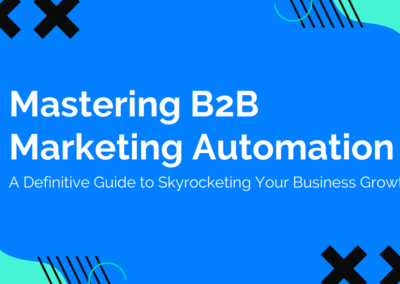When you read the term “demand generation,” it sounds like it just means that you’re “generating demand” for your product. While in some ways, that is accurate, there’s a lot more to demand generation than that. Plenty of things you do as a marketer each day fall under the “demand generation” umbrella.
What is demand generation?
Think of it as any activity that brings attention to your B2B company to bring people into your sales funnel. It’s about keeping in mind where people are in their buying journey when tailoring your marketing materials to them.
You’re not going to launch into a hard sell to someone visiting your website for the first time. And you’re not going to leave out important details for someone who is potentially looking to close a deal. Demand generation is truly your sales and marketing teams working in tandem. After all, the sales cycle of a B2B customer is quite different than a B2C customer. So it’s imperative that efforts to educate, nurture, and convert potential leads take place at the appropriate time.
Where it all starts
The B2C world can use demand generation, especially in areas with longer sales cycles, like home or car buying. However, it’s most common in the B2B world. The whole process begins with getting the word out. B2B companies probably won’t be filming commercials or taking traditional ad space out, so it’s essential to think outside the box. Some common ways B2B companies build awareness of their brand include tactics like:
- Investing in search engine optimization: One of the best ways to allow people to discover your business is to help them solve a problem. Using keywords in your website content that people might search for while looking for a solution will get them on your page and potentially land you a customer.
- Advertising on search engines: I know, it’s like Google is the gatekeeper to business and we have no choice but to play along (unless you choose to use like, Bing or something). But it would be silly to ignore the impact search engines have on business. Shelling out some cash to have your business’s information at the top of relevant searches is a way to kickstart your web presence.
- Hosting webinars: Similar to investing in SEO, hosting webinars is an effective way to demonstrate your value by offering a solution that your potential customers may be looking to solve. Webinars are a low commitment way for people to see what you have to offer and how you can help them.
- Free trials: How many free trials have you signed up for before actually investing in something? From streaming services to gym memberships, free trials are one of the best ways to get someone’s foot in the door. For a B2B company, this could be a consultation call or a free e-book that gives potential customers a taste of what you can offer, without giving too much away.
How demand generation fits into the sales cycle
If you think a lot of these demand generation tactics sound like inbound marketing, you are correct! HubSpot’s simple explanation for this is that inbound marketing is a type of demand generation activity. It’s effective, too — HubSpot found that inbound leads are five times more likely to become customers than outbound leads. That’s not where the connections between the two end, though.
WordStream states that demand generation is a “long-term relationship between a brand’s marketing and sales teams, and prospective customers.” Once the marketing team has created content and used that content’s performance to determine prospective customers and taken it a step further with projects like email campaigns, these contacts are passed along to the sales team. From there, the marketing and sales teams can determine where in the sales cycle each of these leads are. Then they can tailor their marketing efforts accordingly.
Lead scoring, ranking, and routing are all a part of the sales teams’ role in demand generation. Determining which leads should be contacted ups the chances that a sale will be made by focusing energy on the most promising leads.




